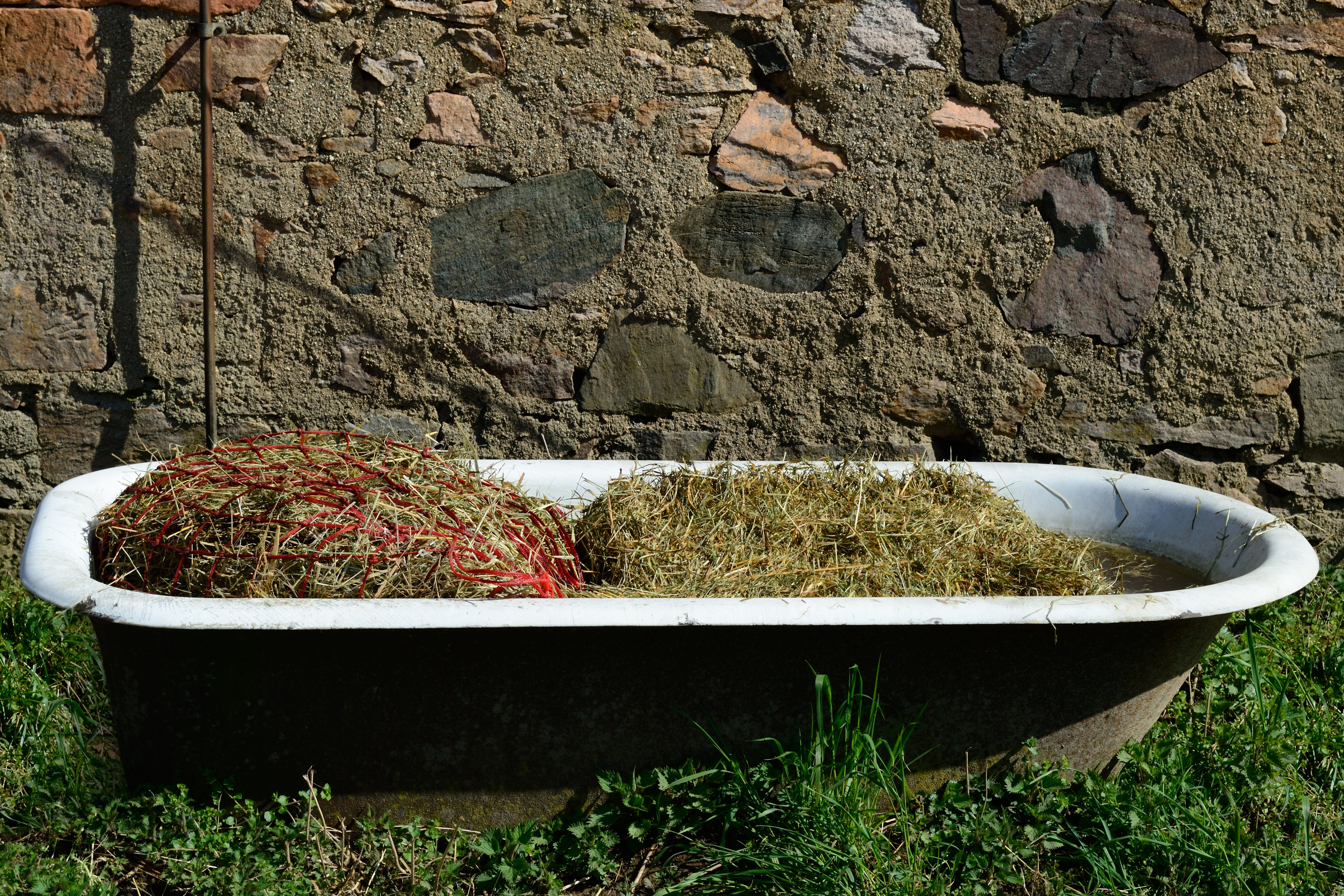Home > Horse Care > Two ways to soak hay
Two ways to soak hay
- March 27, 2024
- ⎯ Christine Barakat with Melinda Freckleton, DVM
The recipe to soak hay is very simple: Start with hay and then add water. But the best way to add the water depends on why you’re wetting hay in the first place.
Soaking for a horse with heaves
If you are wetting hay to control heaves or respiratory irritation, the goal is to flush away dust or keep it from becoming airborne. This doesn’t take long, but you do need to wet the whole flake, not just the outer layer. That means spritzing the hay with a hose probably won’t do. A better approach is to place the flake in a hay net and then dunk it in a large bucket of fresh water. To make sure the hay is thoroughly saturated, hold it beneath the water until no bubbles emerge, a process that will take less than a minute. Then remove the hay net from the bucket and hang it up or remove the wet hay for feeding.
Click here for tips on soaking hay in sub-zero weather.
Soaking for a horse with metabolic conditions

Soaking hay to remove sugars that can exacerbate metabolic conditions such as insulin resistance takes more time. If you’re using warm water, you’ll need to submerge the hay (again, a hay net makes this easy) for 30 minutes; if your water is cool or cold, soak the hay for 60 minutes. In that time, the potentially harmful sugars will leach from the hay into the water. Don’t soak the hay longer, however, because this risks leaching beneficial nutrients. Set a timer on your phone, if necessary, to ensure you don’t forget about your submerged hay net. After a half-hour, remove the hay and feed it immediately. When you are done soaking a serving of hay, dump the water rather than reusing it for another soak.
Don’t miss out! With the free weekly EQUUS newsletter, you’ll get the latest horse health information delivered right to your in basket! If you’re not already receiving the EQUUS newsletter, click here to sign up. It’s *free*!
This article first appeared in the Issue #476 of EQUUS magazine





